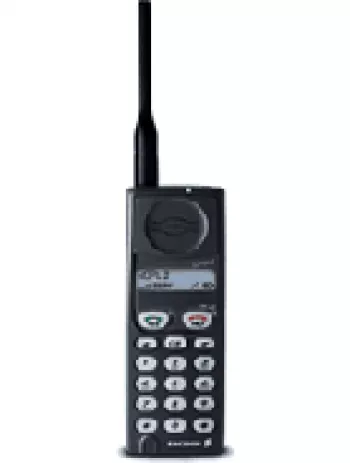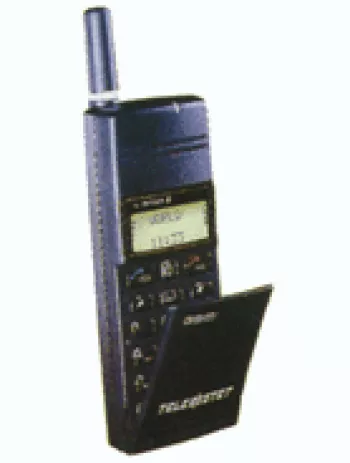
Overview of Ericsson T10s
The Ericsson T10s, announced in 1999, was one of the defining mobile phones of its era. Characterized by its compact design and durable build, the Ericsson T10s catered to the consumer market looking for functionality, reliability, and a touch of innovation during the late 1990s. This phone was particularly appealing due to its monochrome graphic display and sleek style which was a departure from the bulkier models of earlier years. Despite its simplicity by today's standards, the T10s included several features that were considered state-of-the-art at the time.
Design and Build
The Ericsson T10s boasted a compact form factor with dimensions of 105 x 49 x 24 mm, making it easy to handle and fit comfortably in the pocket. Weighing at 135 grams, it was considered lightweight for its time. The device used a Mini-SIM card, which was a standard during that period. Its build quality was solid, which added to its appeal as a durable option for everyday use.
Display
Featuring a monochrome graphic display, the Ericsson T10s had a screen resolution of 101 x 33 pixels and could display up to 3 lines of text (3 x 12 characters). While the screen might seem incredibly basic today, it was sufficient for displaying text messages and interface navigation, which was the primary purpose of mobile phones at that time.
Network and Connectivity
The phone was equipped with GSM technology, supporting 2G bands on GSM 900 and 1800 frequencies. One of the limitations was the lack of GPRS and EDGE, which means that the T10s could not support data services beyond basic SMS messaging. This was fairly standard at the time since mobile internet was still in its infancy.
Battery Life
Powering the T10s was a removable NiMH 750 mAh battery. It provided a standby time of up to 100 hours and a talk time of around 4 hours. The battery performance was adequate for users whose mobile needs were mostly limited to making calls and sending SMS messages. The removable nature of the battery allowed users to replace it easily when the power diminished over time, a feature that gave the device a longer overall lifespan.
Sound and Alerts
On the audio front, the Ericsson T10s included monophonic ringtones and a composer for users to create custom ring signal melodies. It did not have a loudspeaker or a 3.5mm headphone jack, which meant audio experience was limited but not a hindrance, given the phone's primary function of voice calls and messaging.
Memory and Storage
The phone had limited storage capabilities, with no card slot available for memory expansion. However, it was able to store up to 99 entries in its phonebook, adequate for most user's needs at the time. The memory specifications, though minimal, reflected the technological norms of the period when mobile phone usage was still relatively simplistic.
Messaging and Features
The Ericsson T10s supported SMS messaging, which was one of the most popular features of mobile phones in the late 1990s and early 2000s. Other utility features included a clock, alarm, and support for 24 languages, enhancing its usability across different regions. The phone did not support games or have any form of web browser, consistent with its focus on communication basics.
Additional Features
While the T10s was by no means feature-rich by today's standards, it was functional and robust. It did not support modern connectivity options like Bluetooth, WLAN, or USB. These omissions were typical for its time; hence, they didn’t detract from its popularity. With a simple user interface, it was easy to navigate, primarily serving those who needed to stay connected via calls and SMS.
Colors and Customization
The device came in five different colors, allowing some degree of personalization, which was a popular trend. The ability to choose a preferred color provided users with a sense of ownership and style, a forward-thinking move by Ericsson towards consumer preferences.
Conclusion
The Ericsson T10s stands as a testament to the advancement of mobile technology towards the end of the 20th century. While it lacked many of the features modern users deem essential, such as cameras or internet connectivity, it provided reliable performance for straightforward communication needs. Its durability, coupled with the essential features of SMS and voice calling, made it a beloved device for users during its heyday. The T10s is an excellent reminder of how quickly technology evolves, yet how foundational these early devices were in shaping future innovations.
Key Features of Ericsson T10s
- GSM Technology: Operates on GSM 900 / 1800 bands
- Compact Design: Dimensions of 105 x 49 x 24 mm
- Monochrome Display: 101 x 33 pixels resolution
- Supports Mini-SIM
- Phonebook Capacity: Stores up to 99 contacts
- Customizable Ringtones: Vibration and Monophonic ringtones, with a composer
- SMS Messaging Capability
- Removable Battery: NiMH 750 mAh, offering up to 100 hours of standby time
- Multiple Language Support: Available in 24 languages
- Available in 5 Color Options
Disadvantages of Ericsson T10s
- No GPRS or EDGE support for data connectivity.
- Monochrome graphic display with limited resolution (101 x 33 pixels).
- Limited phonebook capacity with only 99 contacts.
- Lacks a camera.
- No loudspeaker functionality.
- Does not support 3.5mm headphone jacks.
- No Bluetooth, WLAN, or USB connectivity.
- No radio functionality.
- Only supports SMS messaging without an advanced browser or multimedia options.
- No built-in games for entertainment.
- Uses a removable NiMH battery with limited standby (100 hours) and talk time (4 hours).
View Also
More Phones
All Rights Reserved +14266 Phones © Mobilawy 2025

























